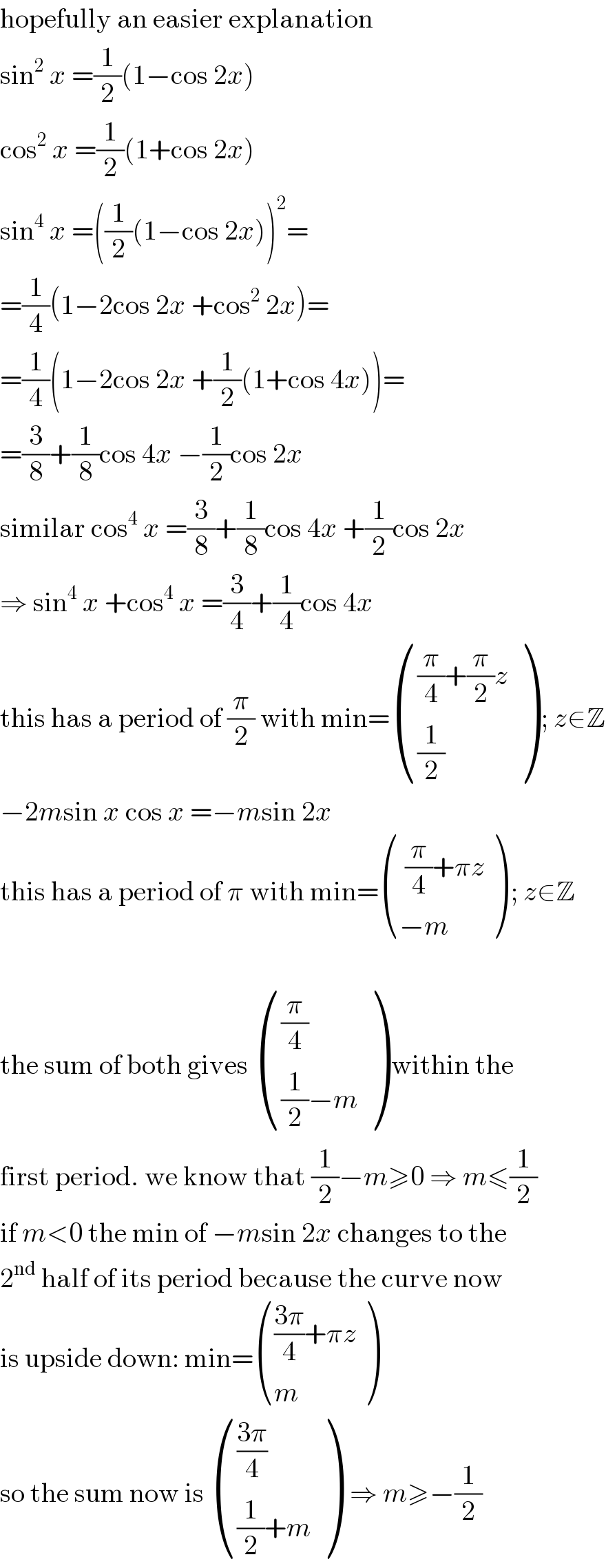
Question and Answers Forum
Question Number 41911 by lucha116 last updated on 15/Aug/18
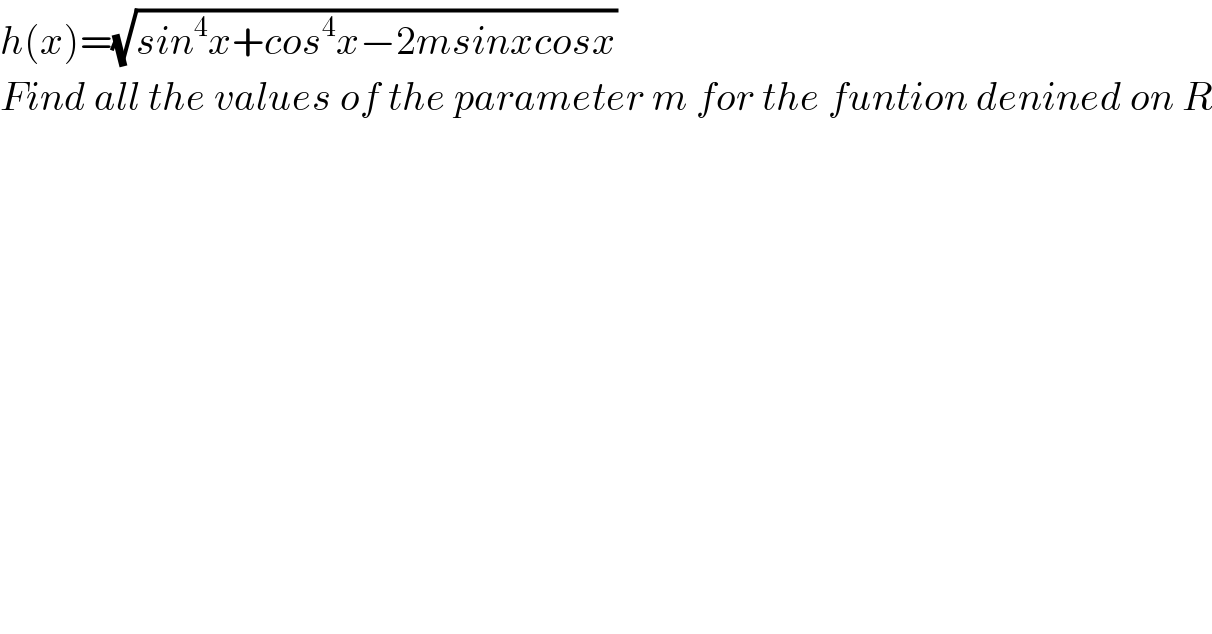
Commented by MJS last updated on 15/Aug/18
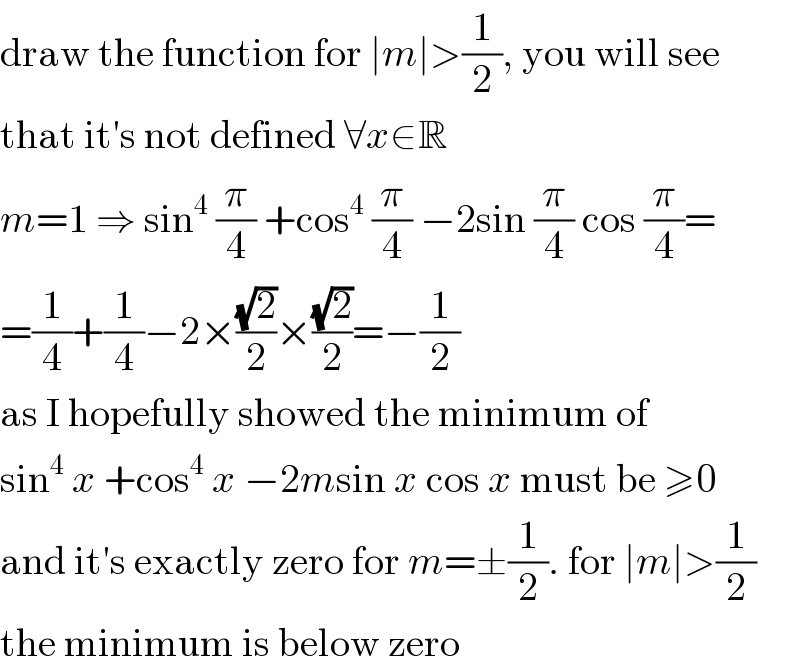
Commented by math khazana by abdo last updated on 15/Aug/18
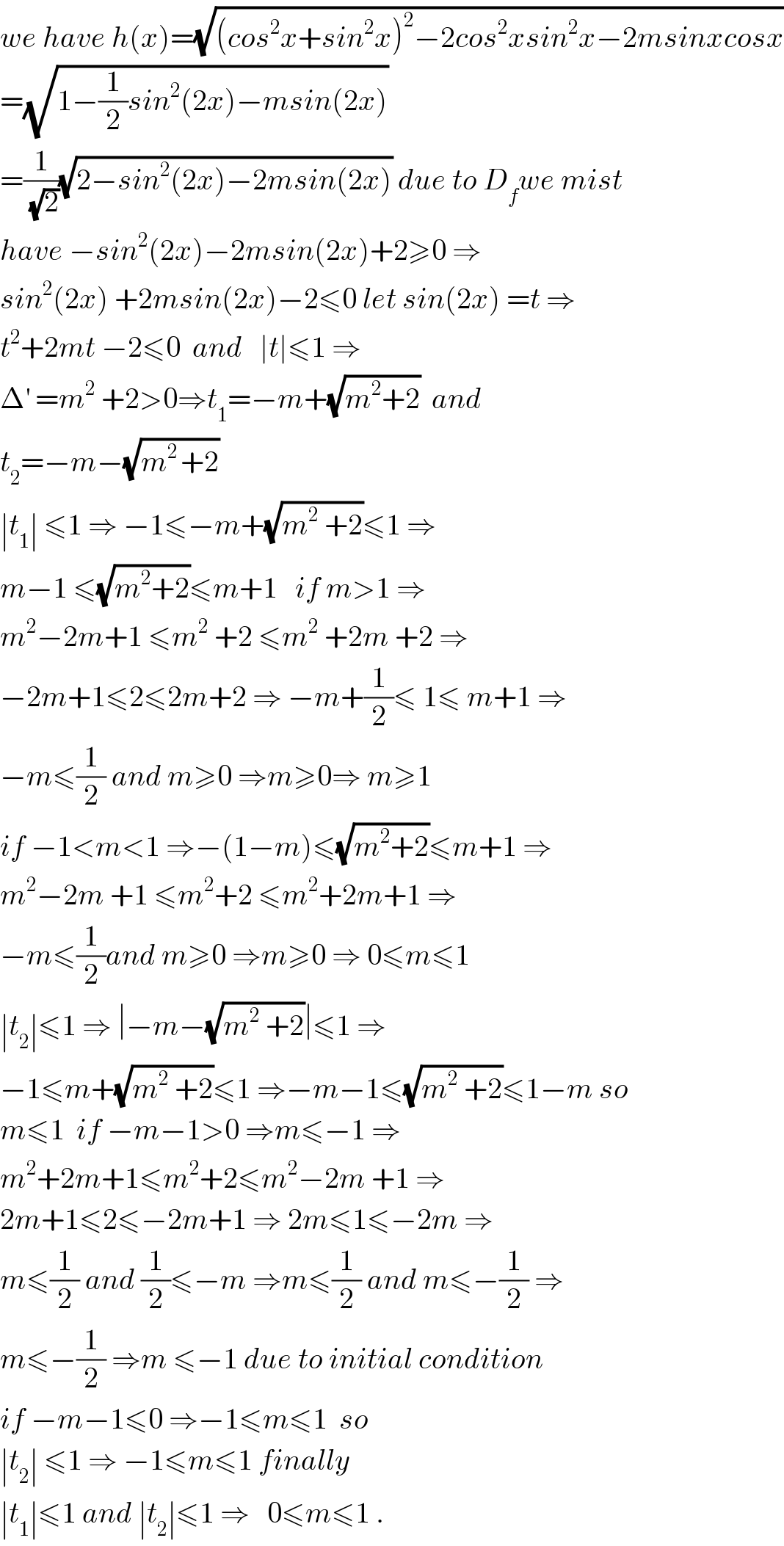
Commented by math khazana by abdo last updated on 15/Aug/18
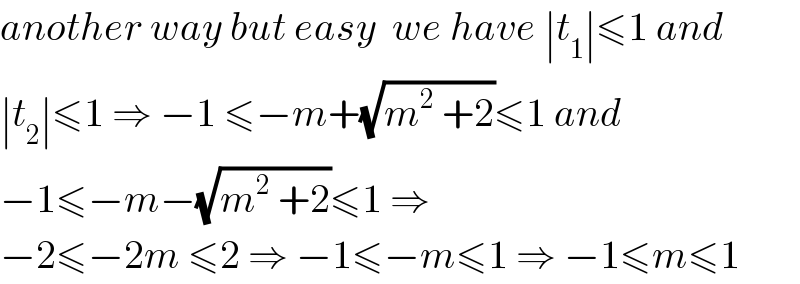
Commented by math khazana by abdo last updated on 15/Aug/18

Commented by maxmathsup by imad last updated on 15/Aug/18
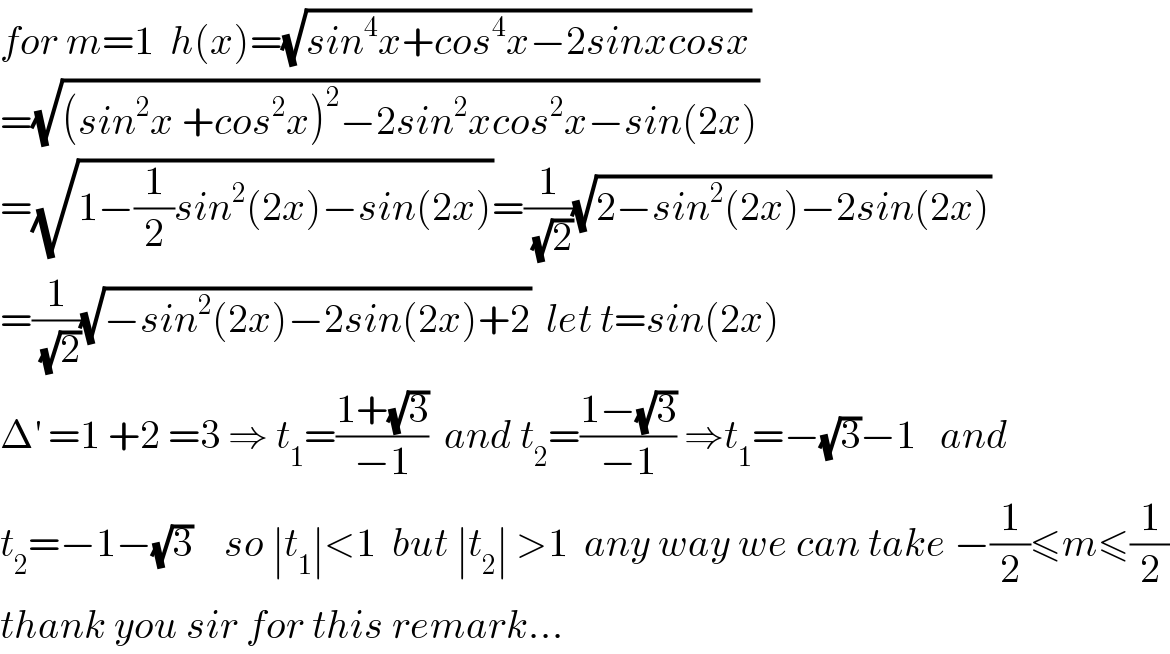
Answered by MJS last updated on 15/Aug/18
![sin^4 x +cos^4 x −2msin x cos x ≥0 ...after some trigonometric transformations: (1/4)cos 4x −msin 2x +(3/4)≥0 (d/dx)[(1/4)cos 4x −msin 2x +(3/4)]=0 −sin 4x −2mcos 2x=0 x=arctan t ((2mt^4 +4t^3 −4t^2 −2m)/((t^2 +1)^2 ))=0 t^4 +((2t^3 )/m)−((2t)/m)−1=0 t=±1 ∨ t=−(1/m)±((√(1−m^2 ))/m) ⇒ −1≤m≤1 ⇒ x=±(π/4) ∨ x=arctan (−(1/m)±((√(1−m^2 ))/m)) (1/4)cos 4x −msin 2x +(3/4)≥0 x_1 =−(π/4) ⇒ m+(1/2)≥0 ⇒ m≥−(1/2) x_2 =(π/4) ⇒ −m+(1/2)≥0 ⇒ m≤(1/2) x_(3, 4) =arctan (−(1/m)±((√(1−m^2 ))/m)) ⇒ (m^2 /2)+1≥0 ⇒ m∈R answer is −(1/2)≤m≤(1/2)](Q41915.png)
Commented by lucha116 last updated on 15/Aug/18

Commented by maxmathsup by imad last updated on 15/Aug/18

Commented by lucha116 last updated on 15/Aug/18

Answered by MJS last updated on 15/Aug/18
